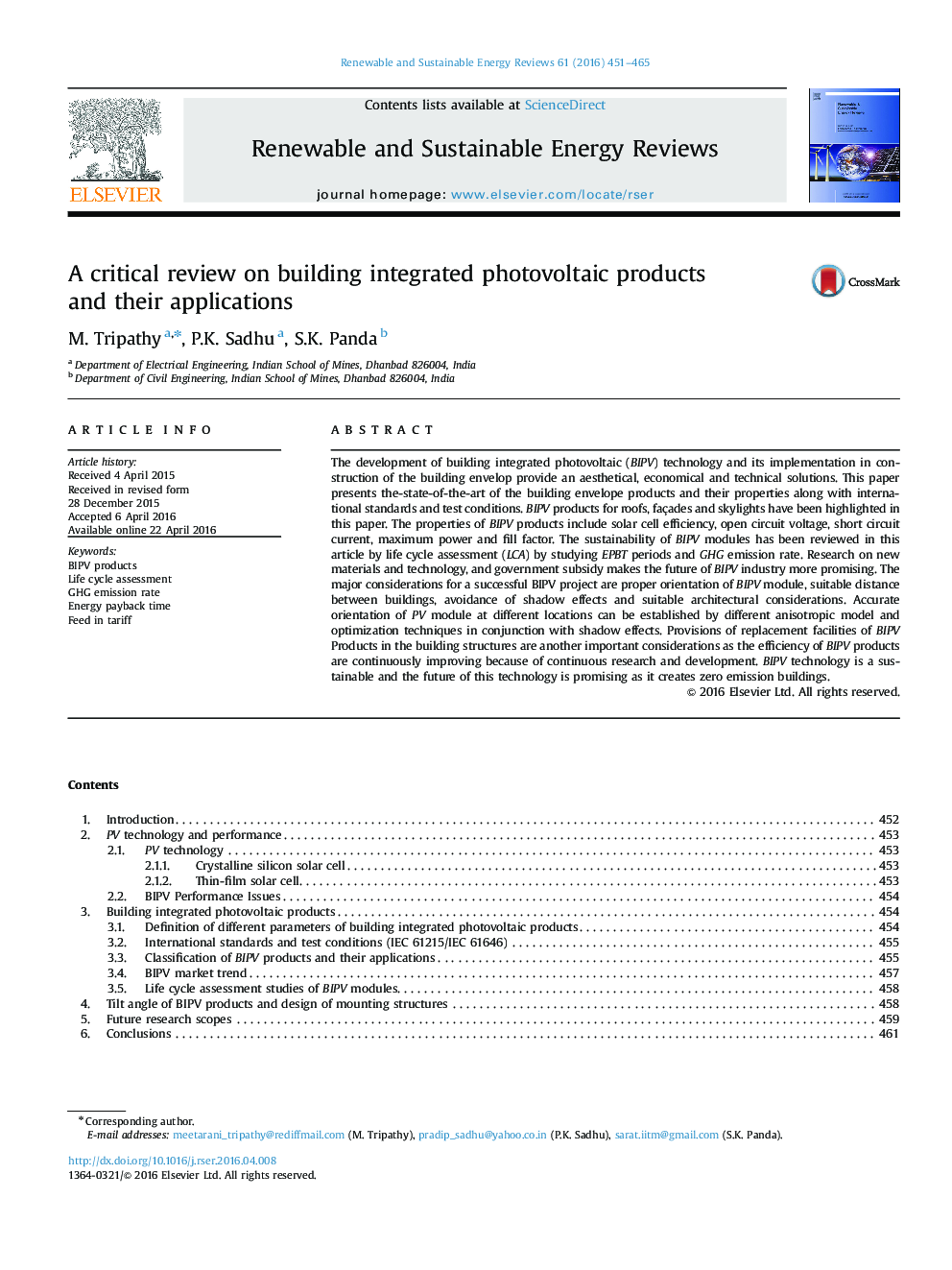| Article ID | Journal | Published Year | Pages | File Type |
|---|---|---|---|---|
| 1749810 | Renewable and Sustainable Energy Reviews | 2016 | 15 Pages |
The development of building integrated photovoltaic (BIPV) technology and its implementation in construction of the building envelop provide an aesthetical, economical and technical solutions. This paper presents the-state-of-the-art of the building envelope products and their properties along with international standards and test conditions. BIPV products for roofs, façades and skylights have been highlighted in this paper. The properties of BIPV products include solar cell efficiency, open circuit voltage, short circuit current, maximum power and fill factor. The sustainability of BIPV modules has been reviewed in this article by life cycle assessment (LCA) by studying EPBT periods and GHG emission rate. Research on new materials and technology, and government subsidy makes the future of BIPV industry more promising. The major considerations for a successful BIPV project are proper orientation of BIPV module, suitable distance between buildings, avoidance of shadow effects and suitable architectural considerations. Accurate orientation of PV module at different locations can be established by different anisotropic model and optimization techniques in conjunction with shadow effects. Provisions of replacement facilities of BIPV Products in the building structures are another important considerations as the efficiency of BIPV products are continuously improving because of continuous research and development. BIPV technology is a sustainable and the future of this technology is promising as it creates zero emission buildings.
